You might have not heard of this museum but if you are a reader, you would probably have bumped into the name Orhan Pamuk. A Turkish Nobel Prize winner for Literature, Pamuk has made fame in Turkey and abroad by authoring a bunch of books that integrate fiction with the Turkish social and political scenes; both new and old. What does that have to do with a museum, you ask? That’s coming right up!
Mr. Pamuk got an idea as he was writing a novel back in 2008, that a museum would perfectly complement his storyline and the work for “The Museum of Innocence” (same name as the book) had thus started. It took him four years to open it in 2012, in Beyoğlu, Istanbul. The museum received “The European Museum Award” in 2014 and the rumor goes that Pamuk had practically spent all his Nobel Prize money -1.5 Million Dollars- on it, including the money he bought the three story building with, 12 years earlier.
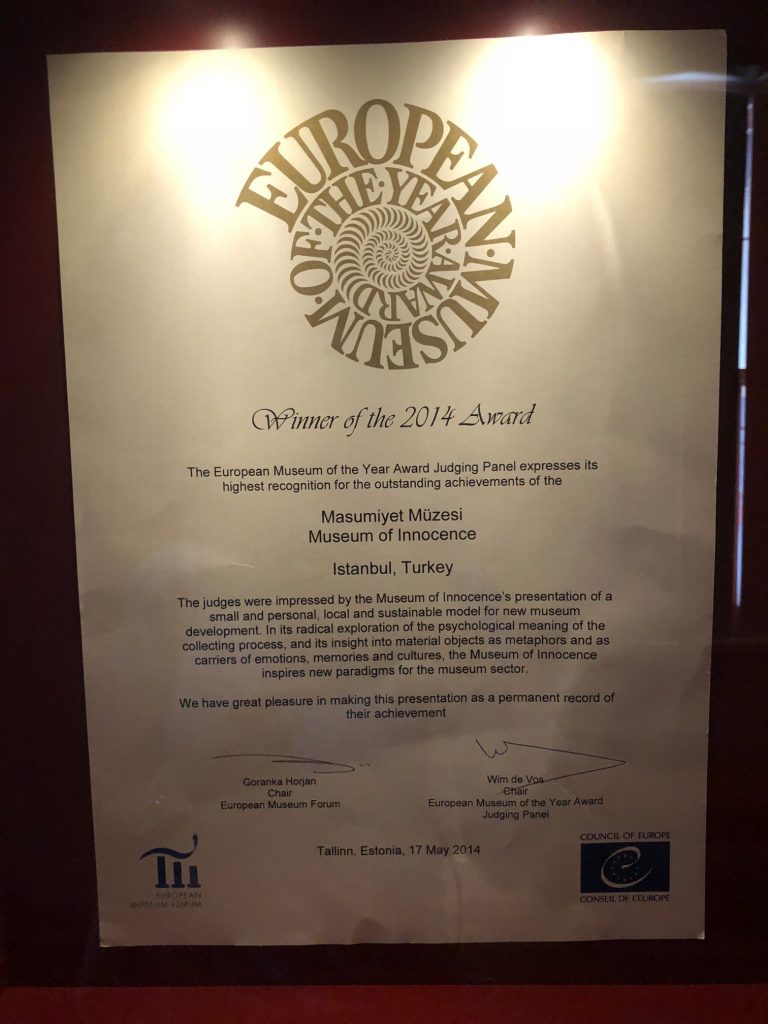
After I paid the hefty 30 TL on entering and another 5 TL for the audio guide (I needed one since I hadn’t read the book, but I now suggest that those who have read it get one too), I stepped into the parallel work of fiction.
The museum starts off with a huge display of Cigarette stubs! 4213 to be exact! Huh?! As per the audio guide, the book is about an obsessive guy named Kemal who lived in 70’s Istanbul through to the 2000s and both the book and the museum are about his obsession with his one-time lover and distant cousin Füsun. This obsession has fed the museum with thousands of artifacts and knick-knacks that Kemal took (read: stole) from Füsun’s house, where he was her husband’s constant guest and partner for eight years. A bit dreary, isn’t it? But also, what an idea! The creative person in me is impressed, primarily with the idea. Then with all the hard work and dedication! Now wait till you see the dark red and brown displays that align the walls of the museum along with the low lighting that make the museum more of a mausoleum or a shrine.
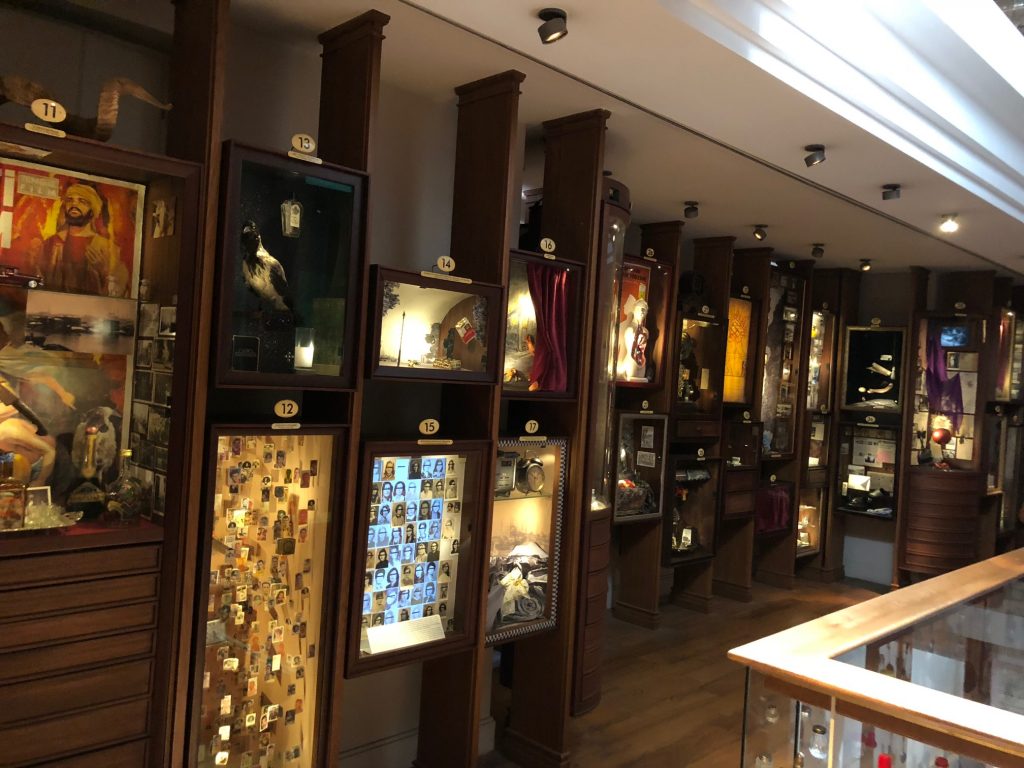
Back to the first cigarette display. Kemal collected these stubs from Füsun’s ashtrays and had Pamuk wrote a comment on each one of them. It took Pamuk well over a year to finish the task! I mean, if that’s not dedication, I don’t know what is. Up on the first floor (yes, the cigarette display takes half of the ground floor!) is where the rest of the museum begins. You get the impression as you step on the landing, that you are in an episode of CSI or Criminal Minds. This is a pure obsessive piece of art. The displays are either filled with many little trinkets; ranging from small personal items like hair clips, earrings and personal photos to newspaper clippings and clips of TV ads from the 1970s. And salt-shakers! Pamuk has excelled in collecting all these items for four full years, which makes me think that maybe that obsessive streak is not in Kemal alone!
The first display on this floor is a special and lonely one. The audio guide tells you this is when Kemal declares that “It was the happiest moment of my life, I just didn’t know it yet”. Inside, the display holds one side of an earring, dropped accidentally by Füsun in her love encounter with Kemal. This butterfly earring, I think, summarizes the whole story, despite its relative minuteness. Who of us hasn’t held onto a souvenir or a memory from a loved one and dwelled on it day in, day out?
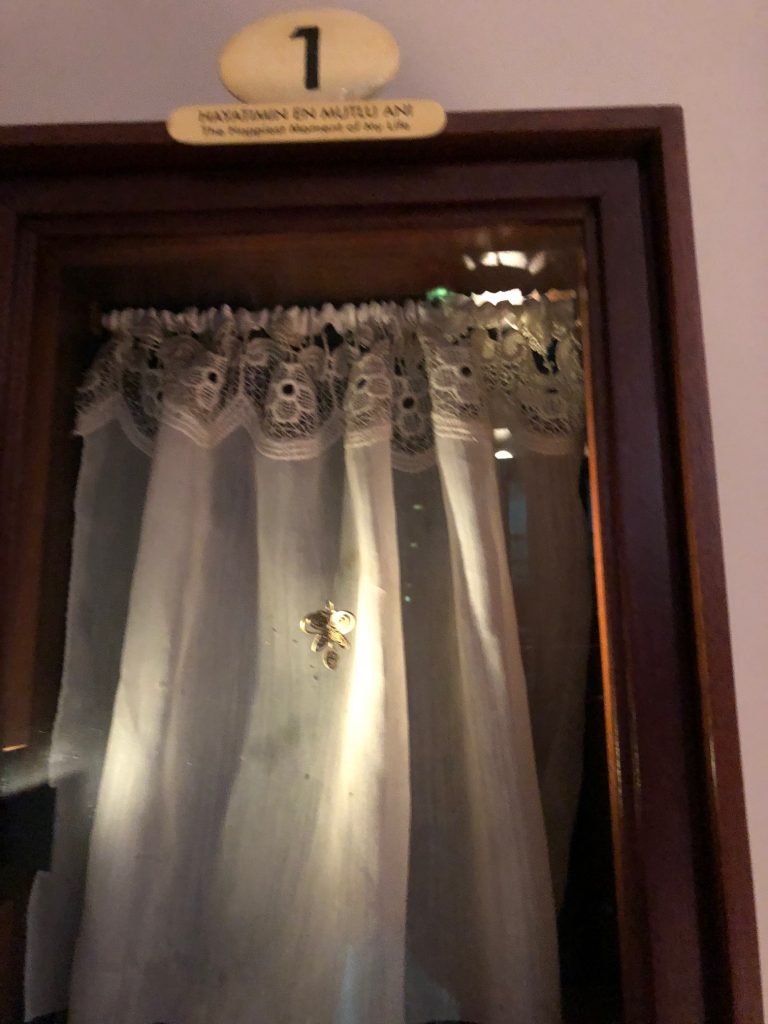
The display itself is representative of how Kemal perceives Füsun’s character. The small silver butterfly is set against a background of a small white lace curtain. How romantic and pretty is that? I think this earring is what gave Pamuk the idea for the actual museum? Maybe.
As soon as you turn around, you see the salt-shakers suspended randomly in the air between the rails of the stairs. They look like ghosts or items hanging about in a ghost house! But also, each one of them is a piece of art. You will totally kneel down to get a better look at them. They are very telling of some of the 1970s household styles. You can definitely see the Everyday, plastic cap shaker, the ceramic, orange I am stylish shaker and the quirky Retro 20s shaker, among many others. They guide you to imagine and sail through the lifetimes and fashions of an older Istanbul.
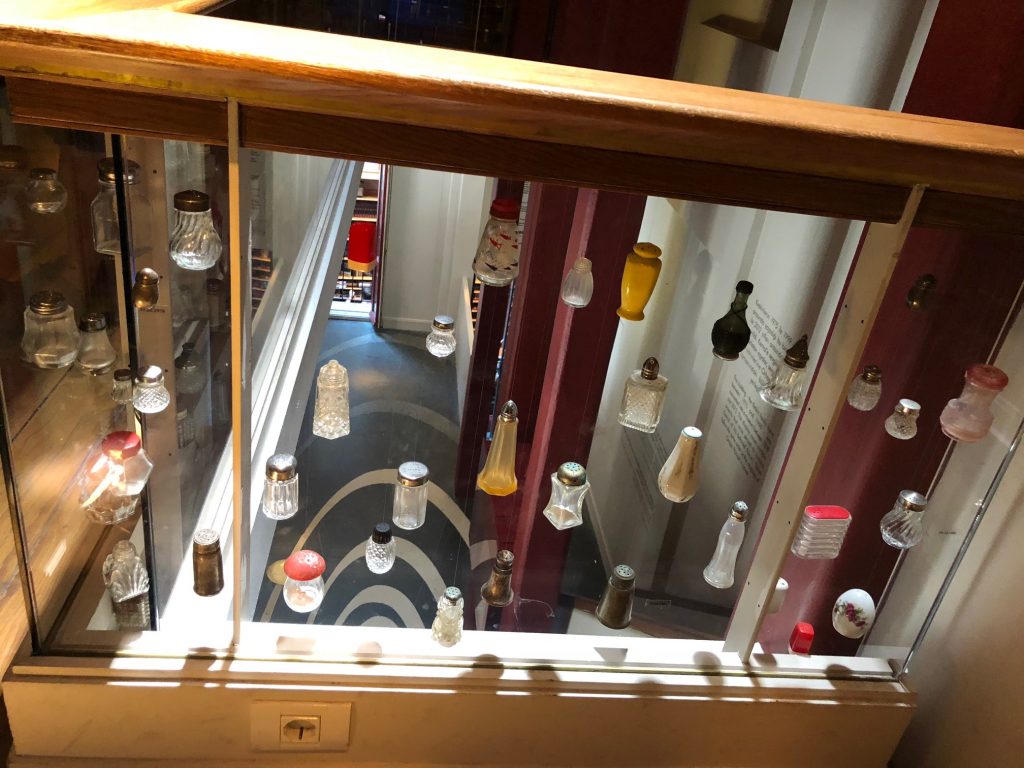
I have to admit, spending an hour or more in this museum can be quite testing. It really is telling of the slow -maybe boring- pace of the book and how depressed Kemal was, and how detail-oriented Pamuk is. I hesitate, strongly, to read the book. The displays that caught my attention I thought marked important events in the book. No. I was mistaken. They were a continuation of the story from a lonely and hopeless man’s point of view and represented transitions in Istanbul’s society and happenings.
Do you know those pictures of criminals in old newspapers, where they hide the eyes with a black strip? What were these doing here? Well, apparently, back in the 60s and 70s, Istanbul’s newspapers made it a habit to publicize pictures of girls who have scandalized their families by having relationships “out of wedlock”! Istanbul, please explain! Why was this a thing? For the news scoop? To add to the shame or to pressure for marriage? I don’t understand it and I don’t forgive you for this, Istanbul! So glad it’s 2018, if you ask me.
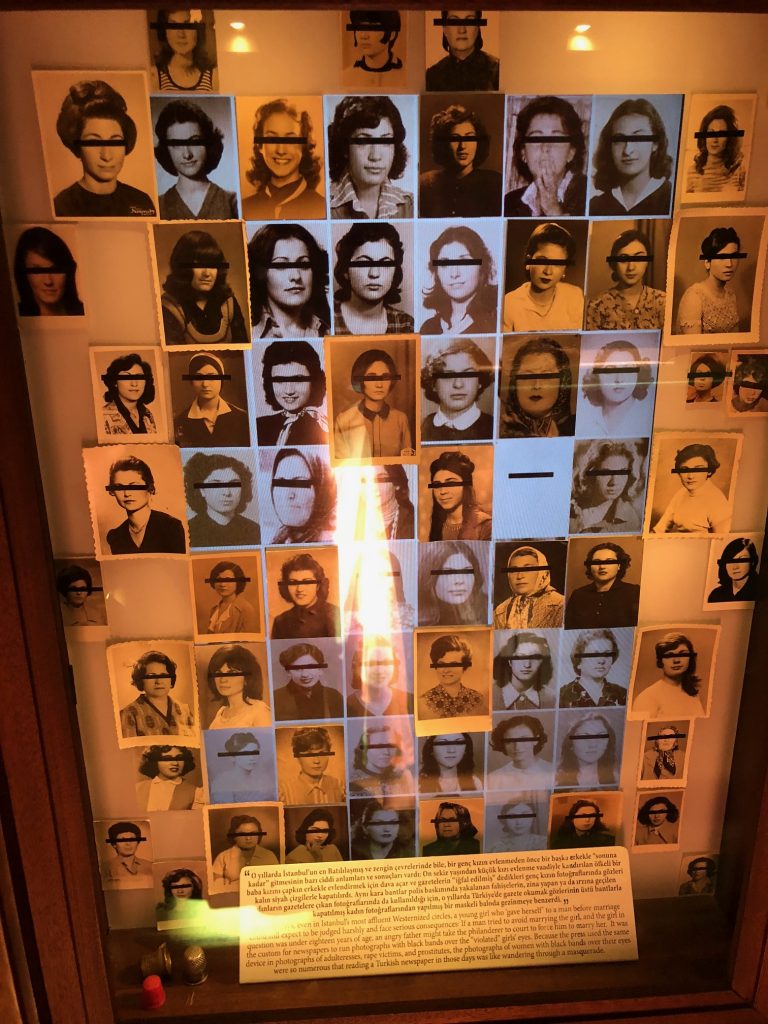
There’s a map of downtown Istanbul where Kemal has marked streets with red and orange colors. Red indicates forbidden streets and orange, the semi-forbidden ones. He has made a plan of areas and streets that remind him of Füsun and decided he didn’t want that kind of misery/reminder in his life. I don’t think he stuck to that discipline though. It seems to me that if you keep it in plain sight, the map is more of a reminder, no?
Exhibits 46 and 47 are Turkey-oriented. The first is a picture of wooden buildings in what looks like slums with an actual brass plate that reads “Fatih Hotel”. In Kemal’s journey of self-realization/search, he quits his aristocratic elitist lifestyle and roams about the city that’s so diverse, it holds a lot of contradictions. If you see this picture, you might not guess it’s an old one, except for its artificial-looking vivid colors. It could have represented any slum or under-privileged area of present-day world. The visions of poverty and misery -like a slap in the face- are apparently timeless as they are country-less. Exhibit 47 is not as grim. It holds a collection of memorabilia from the dresser of Kemal’s father. In the background, a striking picture of a group of Turkish soldiers having a glass of Rakı on their break. Another slap in the face that pulls you out of your own comfortable reality to a surreal one in a snapshot of a moment of another person’s life.
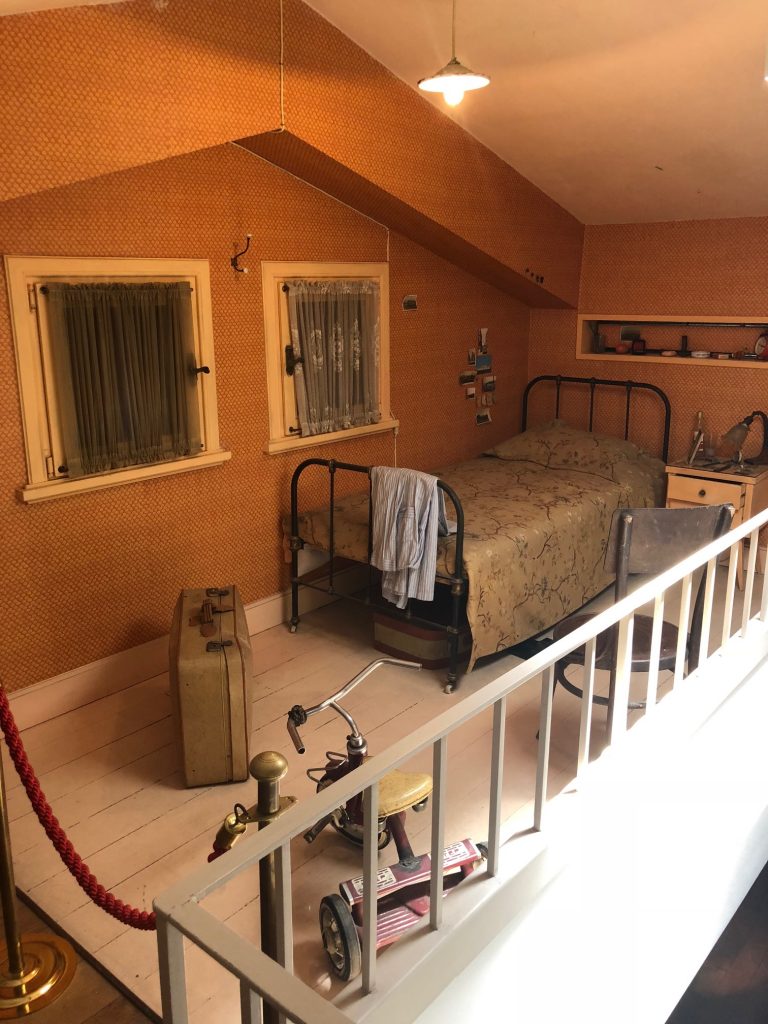
I will leave the second floor to your curious eyes and jump to the last floor, which looks like a bright attic. I go upstairs to find Kemal’s room – where he lived the last years of his life. It feels so lonely up there, with the solitary single bed, the one chair and a small kid’s tricycle. I sit on the bench across from his bed and take it all in. I feel his sadness and solitude and imagine how full of memories he must have been. Behind me on the wall though, a sentence gives some relief to my heavy heart, “Let everyone know, I lived a happy life”.
All photos courtesy of the author.









